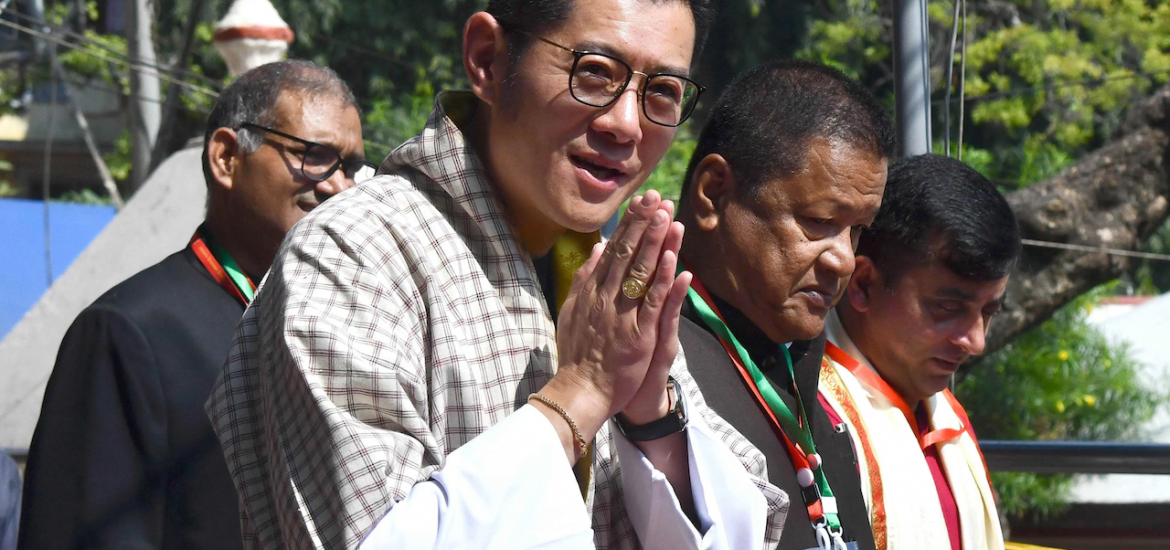After Bhutan’s foreign minister, Tandi Dorji, held a 25th round of talks with China about demarcating the landlocked country’s official boundaries on 23 and 24 October, some in New Delhi were getting nervous. Formal border talks have been ongoing with China since 1984 and a geostrategic flashpoint between Bhutan’s two major neighbors. Others pointed out that the Bhutanese king was just wrapping his state visit to India from 3–10 November. The timing of these two important meetings has led some to believe that while Bhutan might want to settle matters with Beijing in light of growing ties, “Thimphu is sensitive to India’s interests and will surely take them into account as talks on the complex border issue continue.” (Nikkei Asia)
The last independent, Himalayan constitutional monarchy, famously has Buddhism (Drukpa Kagyu) as its state religion. New Delhi has long seen keeping Thimphu in its sphere of influence as a cornerstone of its border security. But it goes beyond that: India’s emphasis on remaining deeply embedded in Vajrayana Buddhism is by no means a secret. It sees Vajrayana as nothing less than a vehicle or major branch (it is one of Buddhism’s great three) that should be under its purview, especially given its historical ties to India and its current position. And several senior Bhutanese figures in the monastic hierarchy and the royal family lent their names to the founding of the International Buddhist Confederation (IBC) in 2011. Currently, it seems fair to characterize IBC, currently under the supervision of the Ministry of Culture as the outsourced arm of India’s Buddhist diplomacy.
Far from being an afterthought, Buddhism’s part in the Indian state’s strategic objectives dates back to the very foundations of the Indian state, to the first prime minister Jawaharlal Nehru’s stated goals after 1947. According to Douglas Ober, Nehru’s plans were ruined by domestic unrest and the fallout of the Ambedkarite movement. This has meant that for his successors, Buddhist diplomacy is nothing if not aimed domestically, to subvert and divide internal forces that seek, from New Delhi’s perspective, to subvert the ideology of Hindu nationalism first.
While I can identify no “grand strategy” informing what Indian policymakers want from Buddhism, it is seen as having the potential to help further certain goals. These seem to be broadly four:
- To neutralize Ambedkarite interpretations of casteism and Buddhism, while maintaining fidelity to B. R. Ambedkar and Indian constitutionalism
- To exert control over the most senior Tibetan Buddhist spiritual authorities in Dehra Dun, Dharamshala, and other seats of the four Vajrayana schools,
- To maintain a narrative of control over Ladakh, Leh, Sikkim, and other non-Hindu dominant states that arouse the RSS’s suspicion,
- And, of course, to lean on Bhutan as a buffer state and indirect proponent of Indian interests in the Himalayas.
Apart from the first, all other objectives cast a multi-strategic eye on China. When seen through these lens, India’s “soft” Buddhist diplomacy is, perhaps with some reason, just as ruthless and pragmatic as any other country can imagine or offer.
At one point during my years of attending IBC’s events, I was called, with a mixture of affection and suspicion by officers in the group, as “the guy with a British passport.” Getting an Indian visa as a Hong Kong Chinese national was becoming increasingly difficult over the years since 2016. Nowadays, India flat-out denies entry to holders of HKSAR passports. In the current circumstances, only Hongkongers with BNO, British, or other foreign passports stand a chance of entering the country. The Sino-Indian relationship and rivalry therefore remains the lens through which we should see Indian Buddhist diplomacy: as a sub-section of India’s broader goals of domestic control and foreign influence.
Reference
Ober, Douglas F. 2019. “From Buddha Bones to Bo Trees: Nehruvian India, Buddhism, and the poetics of power, 1947–1956.” In Modern Asian Studies , Volume 53 , Issue 4 , July 2019 , pp. 1312 – 1350. DOI: https://doi.org/10.1017/S0026749X17000907
See more
Joint Press Release on the 25th Round of Boundary Talks between China and Bhutan (Ministry of Foreign Affairs, China)
India casts wary eye on revived China-Bhutan boundary talks (Nikkei Asia)


